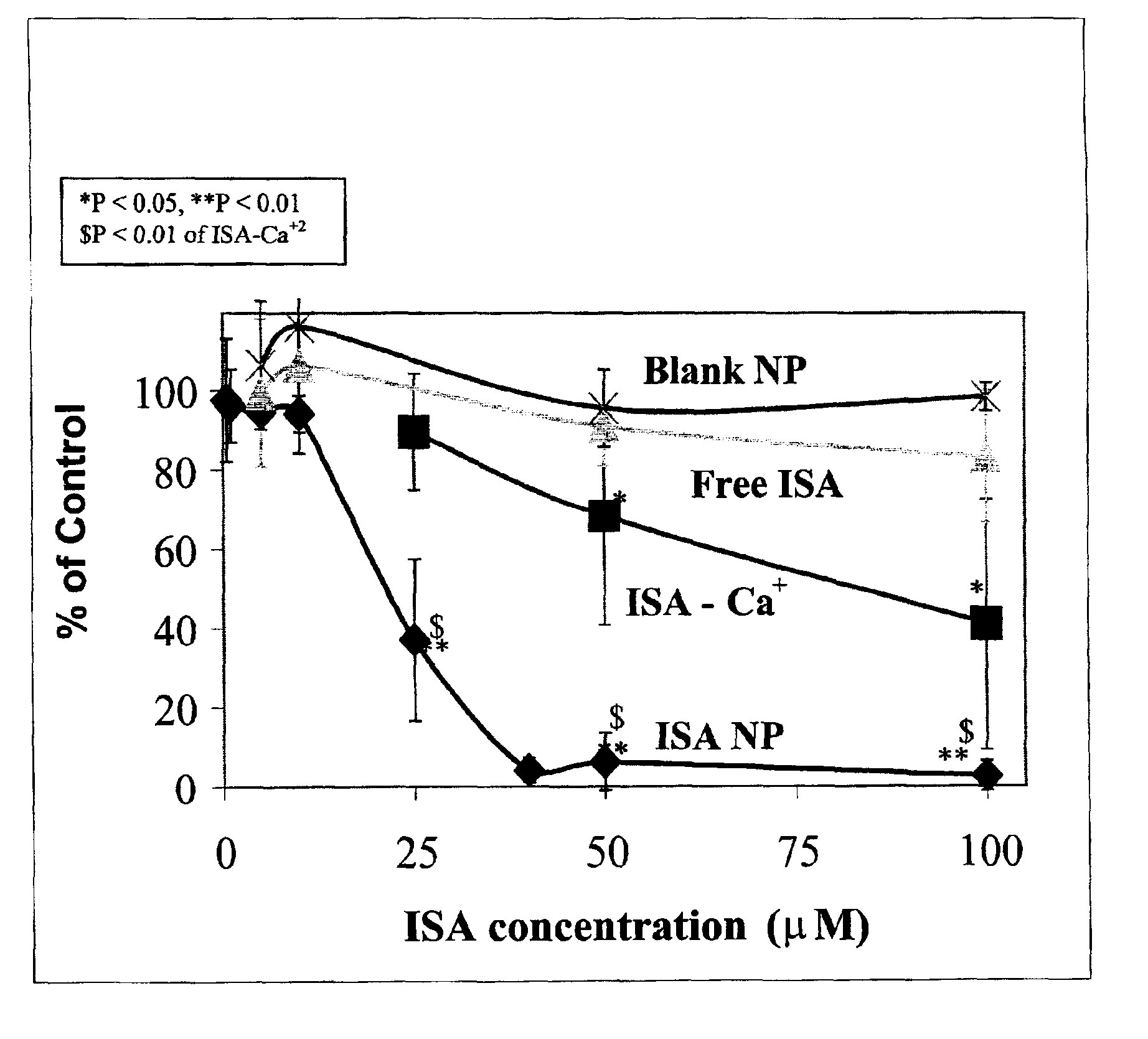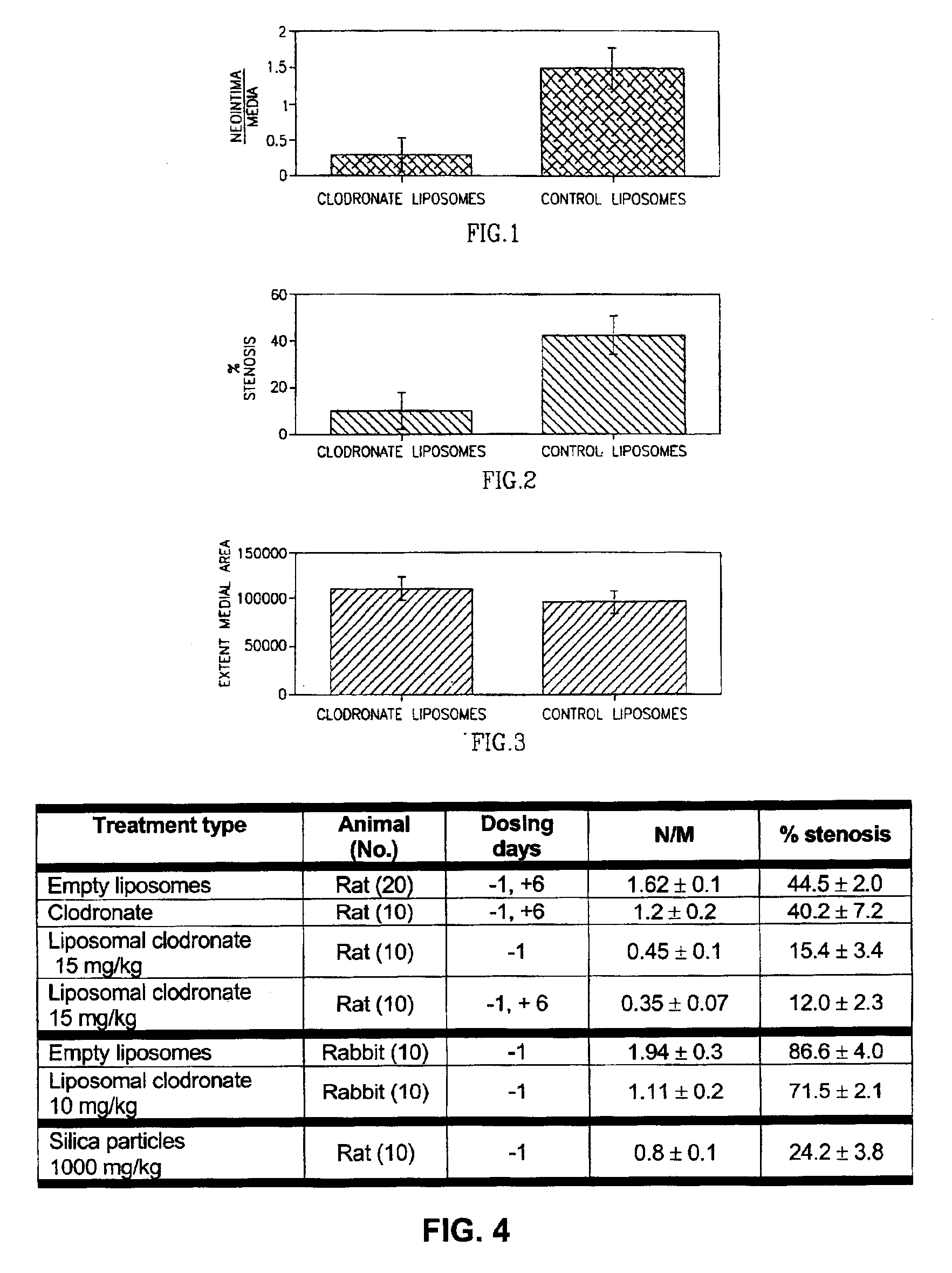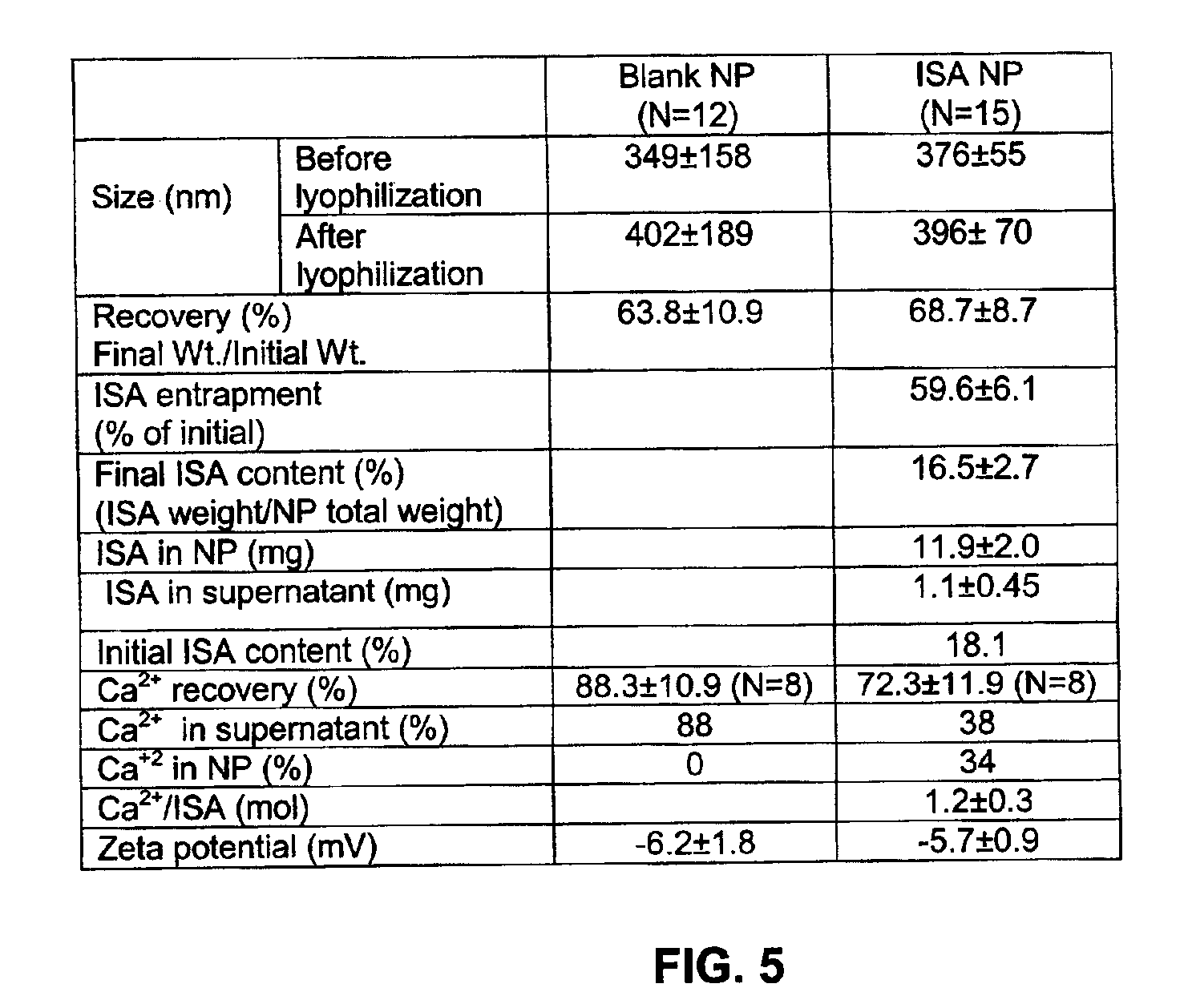Method of treating restenosis using bisphosphonate nanoparticles
a technology of bisphosphonate and nanoparticles, which is applied in the direction of phosphorous compound active ingredients, drug compositions, biocides, etc., can solve the problems of precisely the problems, the patient is placed at risk of a variety of complications, and the stenosis in a substantial proportion, so as to achieve entrapment efficiency, lyophilizability, and high yield. , the effect of enabling sterilization of the np
- Summary
- Abstract
- Description
- Claims
- Application Information
AI Technical Summary
Benefits of technology
Problems solved by technology
Method used
Image
Examples
example 1
Liposomes of Clodronate
[0072]Stock solutions of clodronate were prepared by dissolving the drug in deionized water at a concentration of 0.11 M, pH=7.
Liposome Preparation
[0073]38.9 mg of distearoylphosphatidylglycerol (DSPG), 118.5 mg of distearoyl-phosphatidylcholine (DSPC) and 38.7 mg of cholesterol were accurately weighed and dissolved in 20 ml of chloroform:methanol (9:1) in a round bottom vial. The vial was gently warmed, and the solvent was then evaporated in rotavapor. 20 mls of hydrated diisopropylether were then added and the vial was put into a water bath until the contents were dissolved. 8 mls of the clodronate solution prepared as described above were then added, and the solution was sonicated at 55° C. for a period of 45 minutes. The organic phase was then evaporated in rotavapor (55° C., 100 rpm). Similarly, other drug-containing liposomes can be prepared.
Purification of Prepared Liposomes
[0074]A Sephadex gel was prepared by dissolving 2.6 grams of Sephadex G-50 in 40...
example 2
[0083]The antirestenotic effects of liposomal clodronate injections were studied in the balloon-injured rat and hypercholesterolemic rabbit carotid arterial models. The rats were treated by clodronate-containing liposomes, empty liposomes (control), and clodronate in solution (additional control). The dose of clodronate injected was 1.5 and 15 mg / kg administered one day before procedure (−1) and / or on day 6 (+6) post injury. The rabbits (following 30 days of atherosclerotic diet) were treated one day prior to balloon angioplasty by liposomal clodronate (10 mg / kg). The lumen, neointimal, medial and vessel areas and volumes were measured in the treated and control animal groups by digital planimetry of histological sections, at 14 and 30 days post injury in the rat and rabbit models, respectively.
[0084]The results of the antirestenotic effects of liposomal clodronate are shown in FIG. 4. As illustrated, no significant differences were found between treatments with empty liposomes, and...
example 3
Effect of ISA Composites on RAW 264 Proliferation
ISA Encapsulated in Nanoparticles
[0087]Nanoparticles (NP) were prepared by a novel solvent evaporation polymer precipitation technique using a double emulsion system. 20 mg of ISA acid (Cohen, H. et al., 1999, Pharm. Res., 16: 1399-406) and 8.9 mg of NaHCO3 were dissolved in 0.5 ml Tris buffer, and 90 mg of PLGA were dissolved in 3 ml dichloromethane. The aqueous sodium ISA solution was added to the PLGA organic solution and a water in oil (W / O) emulsion was formed by sonication over an ice-bath using a probe type sonicator. This W / O emulsion was then added to a 2% polyvinyl alcohol (PVA) (20 ml) filter sterilized solution, and the pH was adjusted to 7.4 with NaOH solution containing CaCl2 in a molar ratio of 2:1 to ISA. The mixture was mixed over an ice bath, forming a double emulsion (W / O / W). The emulsion was stirred at 4° C. overnight to allow evaporation of the organic solvent.
[0088]Nanoparticles which did not have any drugs encap...
PUM
| Property | Measurement | Unit |
|---|---|---|
| diameter | aaaaa | aaaaa |
| diameter | aaaaa | aaaaa |
| size | aaaaa | aaaaa |
Abstract
Description
Claims
Application Information
 Login to View More
Login to View More - R&D
- Intellectual Property
- Life Sciences
- Materials
- Tech Scout
- Unparalleled Data Quality
- Higher Quality Content
- 60% Fewer Hallucinations
Browse by: Latest US Patents, China's latest patents, Technical Efficacy Thesaurus, Application Domain, Technology Topic, Popular Technical Reports.
© 2025 PatSnap. All rights reserved.Legal|Privacy policy|Modern Slavery Act Transparency Statement|Sitemap|About US| Contact US: help@patsnap.com



